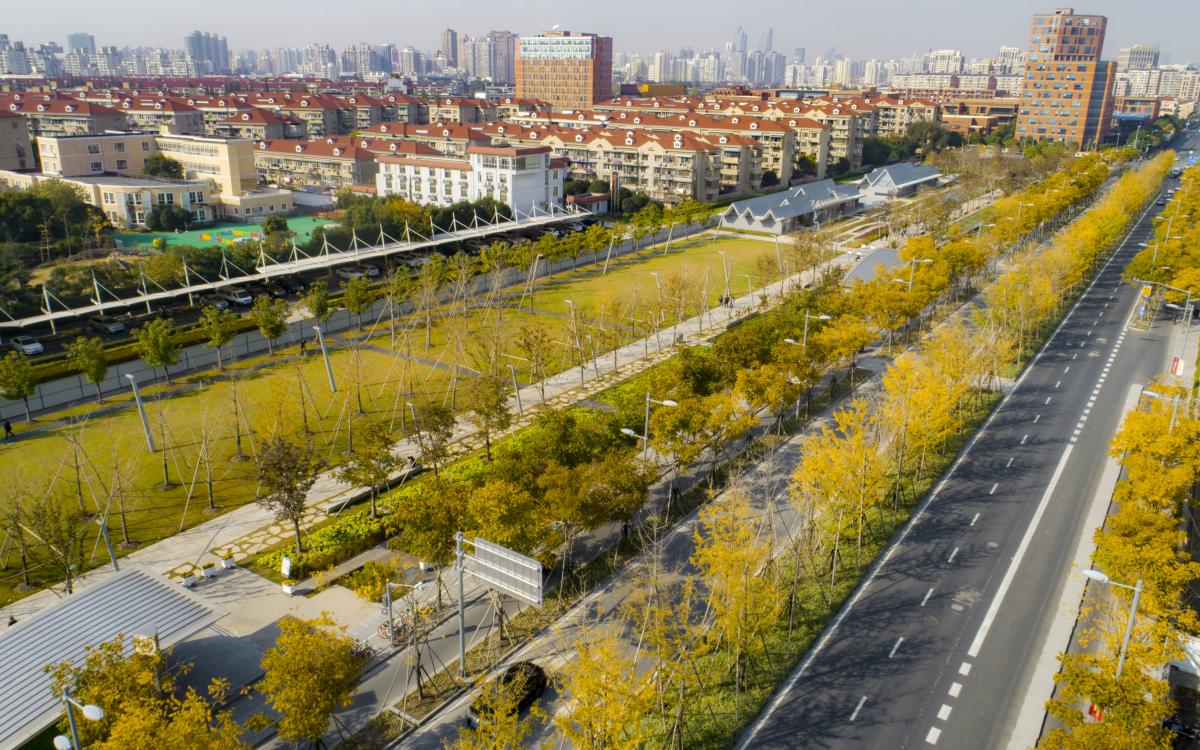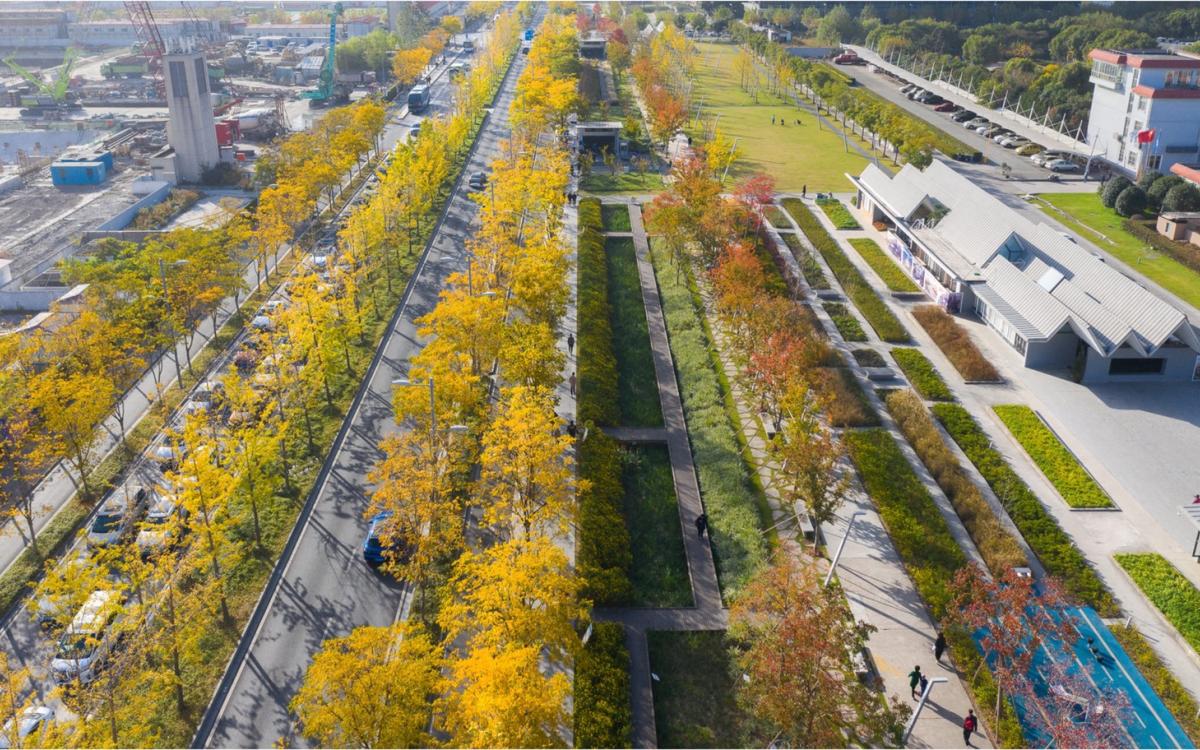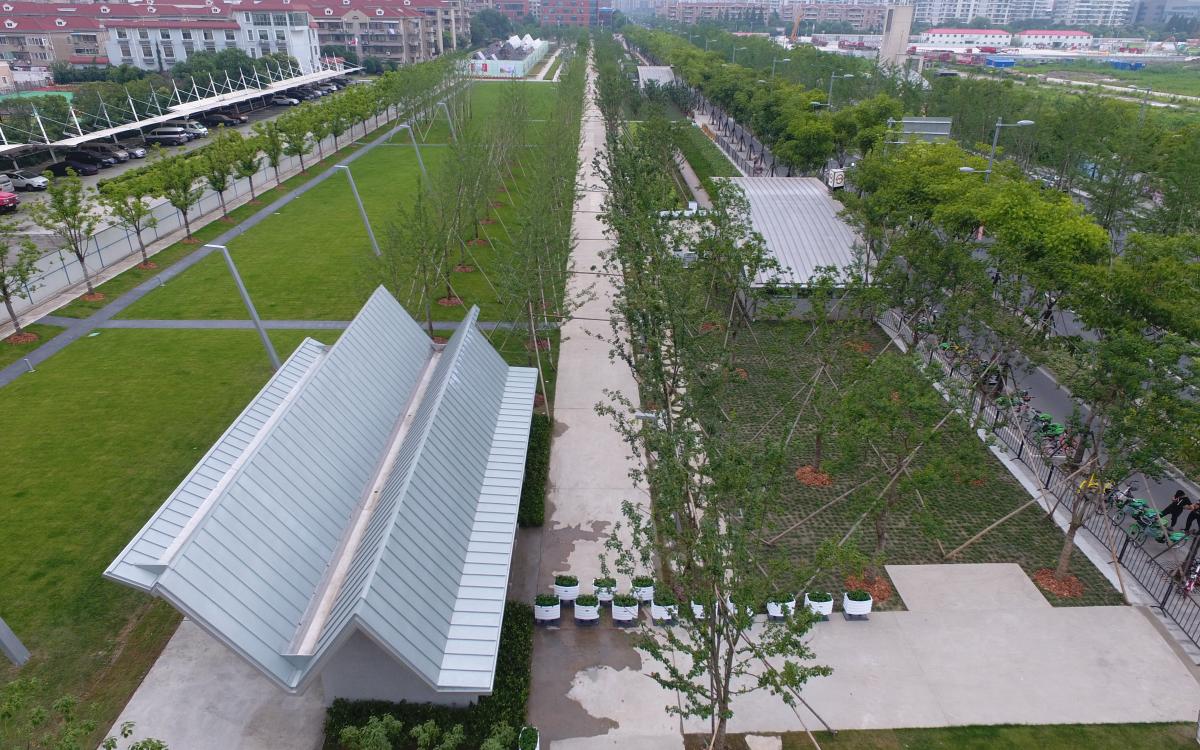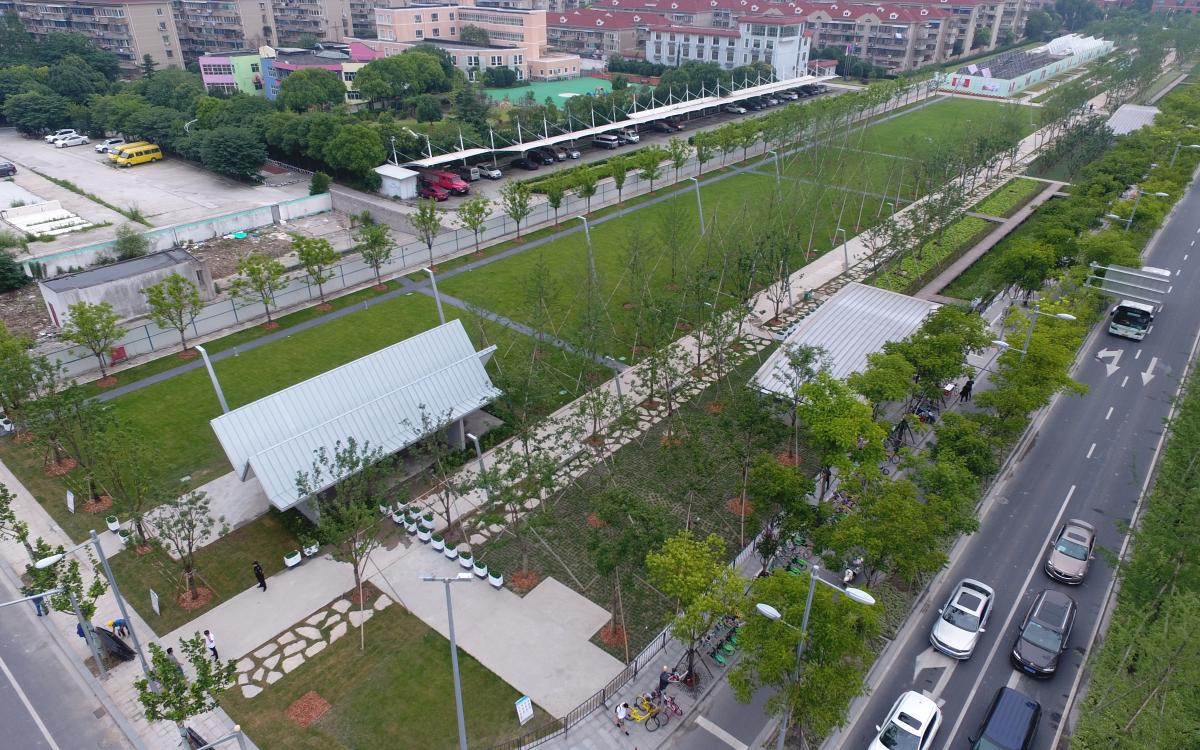Xuhui Qu
Shanghai Shi,
China
The project preserves portions of the runway's original concrete where feasible, including the reuse of broken concrete pieces to build paths, plazas, and resting areas. A row of structurally sound concrete runway panels is served as the major pedestrian/bicycle runway through the park. The runway's painted markings is preserved and supplemented by super graphics throughout the park's environmental signage. In areas where the existing concrete is damaged beyond repair by the previous constructions, new concrete pavement panels are formed to serve the park's uses today.
Diverse wildlife habitats are integrated with various landscape programs, with 100% plant species native to the Yangtze River Delta. These habitats include both land and marine typologies. A bird watching garden, fruit tree groves, and various garden types define the land. A wetland edge, bioengineered riparian edge, and a floating wetland module make up the marine forms. The project builds a valuable ecological patch in the urban environment, which helps to improve the ecological quality of Shanghai as well as create a healthier and more interesting and meaningful living environment for local people.
Approaches of the "Sponge City" concept have been applied in the design. Stormwater runoff from municipal roads in Shanghai is usually discharged into adjacent canals directly, with large amount of pollutants, such as gasoline and heavy metals, contaminating the surface runoff, hence polluting the rivers. The design of the rain gardens (2,706 square meters) along Yunjingroad reduces river pollution and flood impact by cleaning and storing rainwater via plant roots absorption and soil filtration. The rain also creates high ecological value as important habitats for birds and insects. The integrated municipal stormwater management with landscape design enhances the functionality of landscape, setting a good example of state-of-art municipal stormwater management technology in Shanghai.
"Introducing SITES into mainland China has two-fold meanings for us. First, we hope that more and more people can realize that 'sustainable buildings' are not just about buildings per se, but include landscape that are also built and used by us. Second, landscape is also a more straightforward and accessible message to the masses in terms of the benefits and differences that making built environment sustainable can lead to, and eventually affect them, the end users. Through this project, we have already received more inquiries about SITES, and we will definitely bring more SITES projects." -Lili Pan, General Manager of TREND, consulting team of the project




